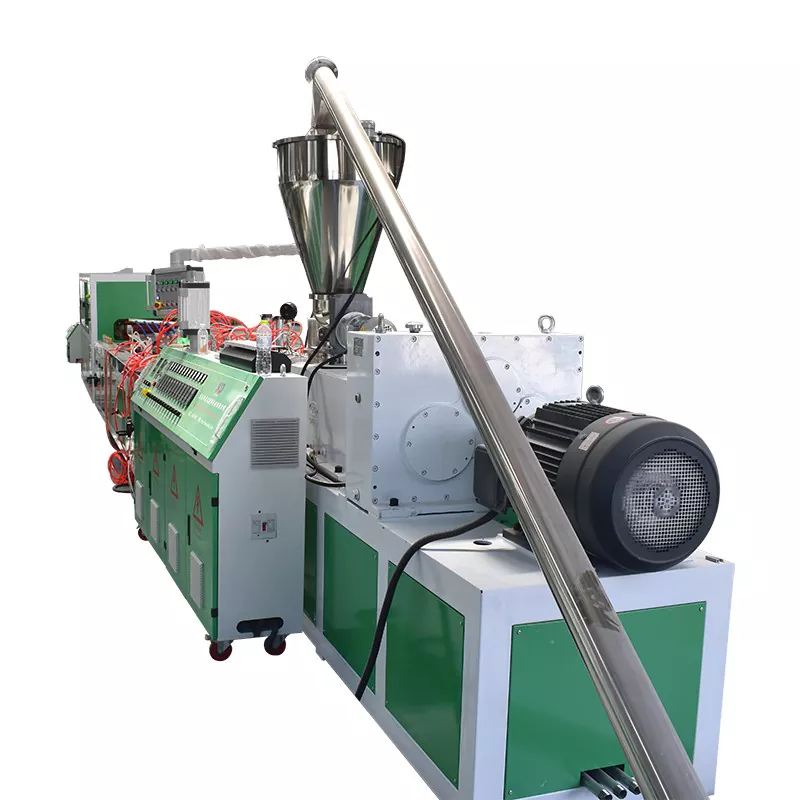The Evolution and Importance of PVC Door Board Production Equipment
2024-11-01
In recent years, the construction and interior design industries have witnessed a surge in the demand for versatile and durable materials. Among these, PVC (Polyvinyl Chloride) door boards have emerged as a popular choice due to their numerous advantages, including durability, moisture resistance, and aesthetic appeal. This blog explores the evolution of PVC door board production equipment, its significance in manufacturing, and how advancements in technology are shaping the future of this industry.
Understanding PVC Door Boards
PVC door boards are made from a synthetic plastic polymer that is widely used in various applications, including construction, automotive, and healthcare. When it comes to doors, PVC boards provide an excellent alternative to traditional materials like wood and metal. They are lightweight, resistant to water and pests, and require minimal maintenance. These features make PVC door boards ideal for interior and exterior doors in residential and commercial settings.
The Role of PVC Door Board Production Equipment
The production of PVC door boards involves several key processes, which are facilitated by specialized machinery. PVC door board production equipment typically includes:
1. Mixing Machines: These machines blend the raw materials, including PVC resin, stabilizers, lubricants, and other additives, to create a homogenous mixture. The quality of this mixture is crucial as it directly impacts the properties of the final product.
2. Extrusion Machines: The blended PVC mixture is then fed into an extrusion machine, where it is heated and forced through a die to form the desired shape of the door board. The extrusion process is vital for ensuring uniform thickness and smooth surfaces.
3. Calendering Machines: In some production lines, calendering machines are used to create sheets of PVC, which can then be cut and shaped into door boards. This process allows for greater control over thickness and surface finish.
4. Foaming Machines: To enhance insulation and reduce weight, foaming machines can introduce air into the PVC mixture during production, resulting in a foam core structure. This feature is particularly desirable for residential applications.
5. Cutting and Finishing Equipment: After the door boards are formed, they must be cut to size and finished. This equipment includes saws, sanding machines, and laminating machines to add decorative finishes or protective coatings.
6. Quality Control Systems: Throughout the production process, quality control systems monitor various parameters to ensure that the door boards meet industry standards for strength, appearance, and durability.
Advantages of Advanced PVC Door Board Production Equipment
The evolution of PVC door board production equipment has led to significant improvements in efficiency, quality, and sustainability. Here are some key benefits:
1. Increased Efficiency: Modern production equipment is designed for high-speed operations, allowing manufacturers to produce large volumes of door boards in a shorter time. This efficiency translates to reduced lead times and increased profitability.
2. Enhanced Product Quality: Advanced machinery is equipped with precise controls that ensure consistent product quality. Innovations in extrusion and calendering technologies allow for improved surface finishes and dimensional accuracy.
3. Customization Options: Today's equipment allows for greater customization, enabling manufacturers to produce door boards in various sizes, colors, and textures to meet specific customer demands.
4. Sustainability: Many manufacturers are adopting eco-friendly practices by utilizing recycled materials in their PVC formulations and implementing energy-efficient production processes. Advanced equipment is often designed to minimize waste and reduce energy consumption.
5. Improved Safety: Modern production lines incorporate safety features that protect workers and minimize hazards. Automated systems reduce manual handling, lowering the risk of injuries.
The Future of PVC Door Board Production
As technology continues to advance, the future of PVC door board production looks promising. Innovations such as artificial intelligence and machine learning are being integrated into production processes to enhance efficiency and quality control further. Additionally, the growing emphasis on sustainability will likely drive the development of even more eco-friendly production methods and materials.
The demand for PVC door boards is expected to rise, driven by their numerous benefits and versatility in various applications. As the industry evolves, manufacturers that invest in cutting-edge production equipment will be better positioned to meet market demands and stay ahead of the competition.
Conclusion
PVC door board production equipment plays a pivotal role in the manufacturing of durable, stylish, and sustainable door solutions. The advancements in production technology have transformed the way these boards are made, leading to increased efficiency, quality, and customization options.
As the construction and design industries continue to evolve, the importance of PVC door boards—and the equipment used to produce them—will only grow. Embracing innovation and sustainability in production practices will enable manufacturers to meet the demands of the modern market while contributing to a more sustainable future. Whether for residential or commercial use, PVC door boards are set to remain a popular choice, and the machinery that produces them is at the forefront of this exciting trend.



